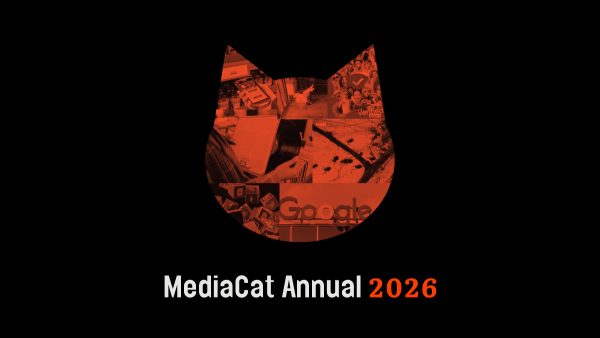OpenAI’s CFO Sarah Friar told the Financial Times last week that advertising was now on the table as a potential revenue stream for the company.
After the interview, Friar sent a note to the publication to temper that statement, saying OpenAI sees plenty of opportunities within its existing business model and has ‘no active plans to pursue advertising’.
But it’s no secret that it costs a lot of money to train and maintain AI models — OpenAI is projecting a $5bn loss on $3.7bn revenue — and Friar’s comments raise questions. Namely, what would advertising on the platform look like? Will marketers embrace a platform whose outputs remain inherently unpredictable? And can OpenAI introduce ads without degrading the user experience of the platform?
Why advertising appeals to OpenAI
OpenAI’s CEO, Sam Altman, has previously expressed scepticism around advertising, posing it as a last resort. Speaking at Harvard last month, he said, ‘I’m not saying OpenAI would never consider ads, but I don’t like them in general, and I think that ‘ads-plus-AI’ is sort of uniquely unsettling to me.’
The company raised $6.6bn from investors in October, so it is not exactly strapped for cash, but according to reports, the funding was given on the condition that OpenAI becomes a for-profit company within two years.
Altman may not be enamoured of advertising, but it presents a scalable, high-margin revenue stream that could fund OpenAI’s ambitions and alleviate its costs.
What could advertising on OpenAI look like?
OpenAI’s market lead comes in part from its consumer-facing products. Last week, Altman revealed that ChatGPT usage has surged to over 300 million weekly users, up from 200 million in August.
But OpenAI is also expanding its offerings with higher-tier subscription models aimed at businesses and developers, following the lead of competitors like Jasper AI and Cohere.
On 4 December, Altman took to X to announce The 12 Days of OpenAI, which launched with the full version of OpenAI o1 — an advanced model capable of complex reasoning in areas like coding and math, while also simplifying the API for developers — and ChatGPT Pro, a $200-per-month subscription to all of OpenAI’s most advanced tools. This includes 50 priority videos using its new text-to-video tool, Sora, which OpenAI first teased in February and released on 9 December.
With these updates in mind, here are some possibilities for how ads could look on OpenAI.
Sponsored prompts: OpenAI could draw inspiration from the integration of Copilot’s contextual ads. In September 2023, Microsoft announced its Compare and Decide Ads format, which promises to help users compare products directly within Bing’s chatbot function using personalised criteria. This October, the company revealed several enhancements, with ads now appearing beneath organic responses, aiming to improve relevance and minimise clutter.
Paul Longo, GM of AI in Ads at Microsoft Advertising, noted that these advancements allowed for ‘fewer ad annotations and extensions shown’, reflecting prioritised user experience. OpenAI will have to navigate the same pitfalls, ensuring ads enhance rather than disrupt conversational flow.

Branded video themes: TikTok’s Branded Effects and Instagram’s AR filters provide successful examples of branded video assets, but both rely on overlaying static or pre-designed visuals onto user-generated content. OpenAI’s Sora generates dynamic video content from text inputs, meaning that ad integrations would likely have to take a different form. It’s possible that some of Sora’s features, such as style presets or creative gallery, have the potential to host branded assets. Excluding those created using ChatGPT Pro, all Sora-generated videos are watermarked, offering another feasible branding opportunity for paid partnerships.
Professional ads via o1: OpenAI’s o1 reasoning model could offer the ability to deliver precision-targeted advertising tailored to industry-specific needs. Similar to LinkedIn’s Sponsored Content, OpenAI could sell advertising placements in workflows where professionals are actively seeking solutions.
By focusing on sectors like finance, education and engineering — fields most likely to benefit from o1’s refined capabilities — OpenAI could create a premium ad tier for professional use cases. This approach would not only align with user intent, but leverage user trust in OpenAI’s ability to provide truly relevant solutions.
Why OpenAI may not appeal to brands
Altman himself has acknowledged that the dynamic, real-time nature of OpenAI’s tools makes consistent messaging challenging. Brands accustomed to controlled digital environments may be hesitant to engage with a platform that lacks predictable outcomes and risks misalignment with their values.
As outlined in GenAI Advertising: Risks of Personalizing Ads with LLMs, the uncertainty and lack of transparency surrounding LLM-generated content could undermine established trust and consumer confidence. The Achilles heel of AI hallucinations similarly raises concerns around brand safety and misinformation.
How OpenAI might charge advertisers depends on the company’s infrastructure to serve, track and sell its ads — an infrastructure that does not currently exist. As tech journalist and CEO of EZPR, Ed Zitron, highlights, ‘OpenAI would need a way to target ads, and a team to sell advertising — or, instead, use a third-party ad network that would take a significant bite out of its revenue.’
Until the company is able to establish privacy-conscious policies and develop transparent, robust ad systems, OpenAI risks remaining a non-starter for blue chip advertisers, despite its significant reach and user engagement.
Balancing the scales of a two-sided marketplace
Facebook, YouTube and myriad other social media and streaming sites have faced backlash for aggressive monetisation strategies that has led to what journalist Cory Doctorow coined the ‘enshittification’ of their platforms.
He writes: ‘It is a seemingly inevitable consequence arising from the combination of the ease of changing how a platform allocates value, combined with the nature of a “two-sided market,” where a platform sits between buyers and sellers, hold each hostage to the other, raking off an ever-larger share of the value that passes between them.’
Facebook’s push for constant growth has seen its users’ feeds inundated with irrelevant ‘relevant content’ and flooded with AI slop. In September, YouTube started selling ad placements to its pause screens, just months after introducing unskippable 30-second ads to screens. Amazon introduced ads to Prime Video at the start of the year, with the option to pay an additional £2.99 for an ad-free experience.
In recent years, the apps we use to travel, order food or track menstruation have all realised the value in monetising our data and cashed in. Given the vast amount of personal interactions ChatGPT processes, the data it collects could offer unparalleled insights into our habits, interests and intimate information, making it a potent tool for hyper-targeted advertising — and a privacy and regulatory concern.
Transparency will be critical: opt-in systems, clear ad labelling, and robust content guidelines will help ensure that ads enhance, rather than detract from, the user experience.
OpenAI’s interest in advertising reflects the growing urgency of industry-wide financial challenges.
The AI sector at large faces mounting pressure as companies work to scale their models, with the high energy consumption of these systems under increasing scrutiny.
In the long run, few companies can resist the allure of monetising through ads. Netflix’s chairman, Reed Hastings, was staunchly opposed to including ads on the platform; a stance he later regretted, saying, ‘I wish we had flipped a few years earlier on it, but we’ll catch up and in a couple of years we won’t remember when we started it.’
If we’ve learned anything in the last twenty years, it’s that no matter how idealistic or disruptive a start-up claims to be, all businesses face the same financial pressures. As markets evolve and competition intensifies, the question isn’t usually if companies that have the option to turn to advertising will do so, but when.





















